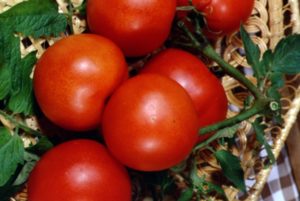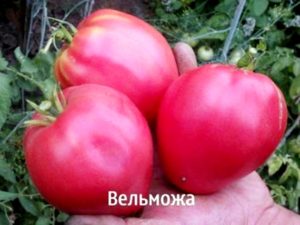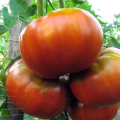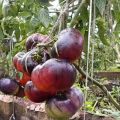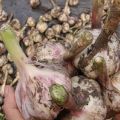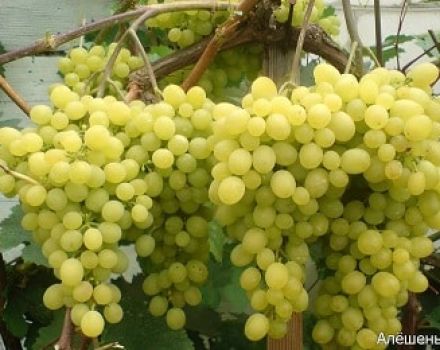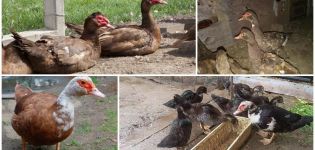Characteristics and description of the Siberian early ripening tomato variety, yield and cultivation
The early-ripening Siberian tomato has been known to vegetable growers for a long time and has established itself as the best parameters. To harvest a good harvest, you need to take into account some features of the variety and its care.
General information
The Siberian early ripening tomato variety belongs to the determinant group, since at a certain moment the growth stops and does not require pinching the top. On average, the height of the bush is 50 cm, but it can grow up to 90 cm. Tomatoes can be grown both in open beds and in a greenhouse. Ideal for growing in short, not too warm Siberian summers.
Features of the plant:
- stem is strong, with a lot of foliage;
- medium-sized leaves are dark green in color;
- 6 tomatoes are formed on one brush;
- the roots do not go too deep into the ground, but they have many branches;
- the fruits begin to sing early, approximately 110 days after planting the seeds;
- resists many diseases well.

Siberian early-ripening tomatoes are remembered for the following characteristics:
- the weight of one fruit is about 70 g;
- the surface is bright red;
- rounded shape with slight ribbing;
- small content inside the seeds;
- dense fleshy pulp contains enough juice;
- dense skin prevents cracking, the vegetable is well stored and easily transported.
The yield is high, the berries begin to ripen at the same time, which is convenient when preparing meals for the winter. Growing in greenhouse conditions, up to 1 kg of fruit can be harvested from one bush. A tomato grown outdoors will give a slightly less crop, about 600 grams.
Benefits of the variety
The characteristic and description of the Siberian early ripening tomato variety includes the following positive properties:
- a large number of fruits are formed for a long time;
- tolerates cold and continues to develop in similar conditions;
- you can eat in any form;
- shows unpretentiousness to soil properties, lack of care;
- fruits ripen quickly and simultaneously;
- resistance to certain diseases.
Despite the fact that the early variety is highly resistant to some diseases, there is still a risk. Reviews of many vegetable growers contain information that the variety is sick with late blight, fusarium, and is exposed to gray rot.

The tomato variety is often attacked by pests. Insects such as a bear, aphid, and wireworm can cause real harm. To prevent the problem or quickly drive out pests, special chemicals or folk recipes are used.
Experienced vegetable growers who have planted tomatoes more than once leave positive reviews.
Ivan, 47 years old: “I have planted an early ripe Siberian tomato in my garden for several years in a row. The plant allows you to get a good harvest, which ripens together in any year, even with bad weather conditions. It does not require special care. The fruit tastes sweet with a pronounced sourness. Great for a region where summers are short and cool. "
Plant care
Seeds for seedlings begin to be planted in the last days of March. Previously, it is recommended to disinfect them, harden and germinate.
In a container with soil, pits are made 1 cm deep, where the seeds are placed. The box is then covered with plastic and moved to a warm, dry place. As soon as all the sprouts sprout, the film is removed and care continues on a well-lit windowsill.
As soon as two leaves unfold, they carry out the picking procedure into separate cups. The pick is carried out only on strong and large seedlings. They are transplanted under the open sky on the 20th of May. It is useful to add superphosphate to the holes intended for seedlings.
The spacing between the pits should be approximately 50 cm.The distance between the rows should be at least 30 cm.
Another feature is that you need to form three stems. The procedure allows you to increase the amount of the harvested crop. Since the stem does not grow very high upward, an additional retaining structure does not need to be installed.
Another integral procedure is pinching. If you do not cut the side branches, then the plant grows and the amount of fruit formation is significantly reduced.
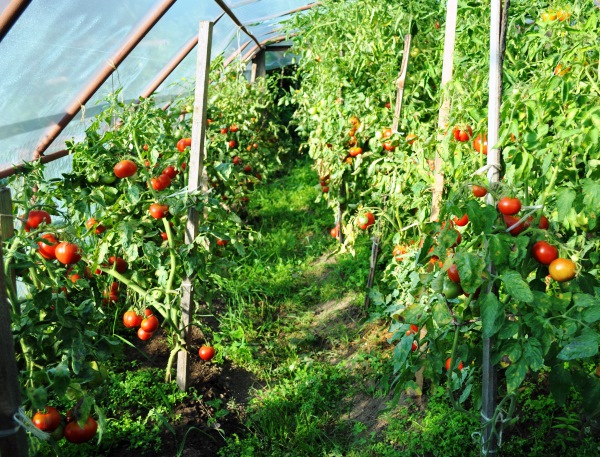
It is recommended to water Siberian tomatoes with settled water early in the morning or in the evening. Avoid getting moisture on the green part of the plant. After watering or rains, you need to loosen the soil. Be sure to get rid of weeds and fertilize on time.
Two weeks after planting in a permanent place, when the plant takes root and adapts, it is recommended to mulch the ground. Straw, chopped green grass, peat can be used as an additional layer. The mulch layer should be at least 5 cm.
Possible problems
It will not be difficult to grow Siberian tomatoes, but if you do not follow the rules of care, then problems will arise that lead to loss of crops.

Water as needed. The scheme usually includes one watering every 5-6 days. If the moisture in the soil increases, then rotting and fungal disease appear. If the problem has already appeared, wood ash can come to the rescue, with which they simply sprinkle the soil or make a liquid solution.
Planting seeds early increases the risk of pulling out the seedlings. Then the number of fruits decreases, and the susceptibility to pathogens increases. For seedlings, you need to provide the necessary level of humidity and air temperature, there must be a sufficient supply of light.
The bushes of the variety are small, but sometimes they can break due to the placement of large fruits on the branches. Therefore, you need to take care in time and install the support.
